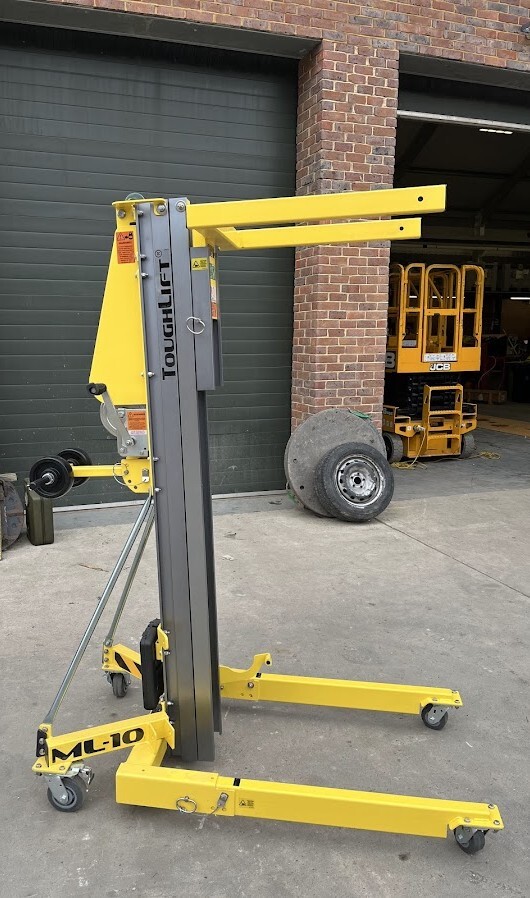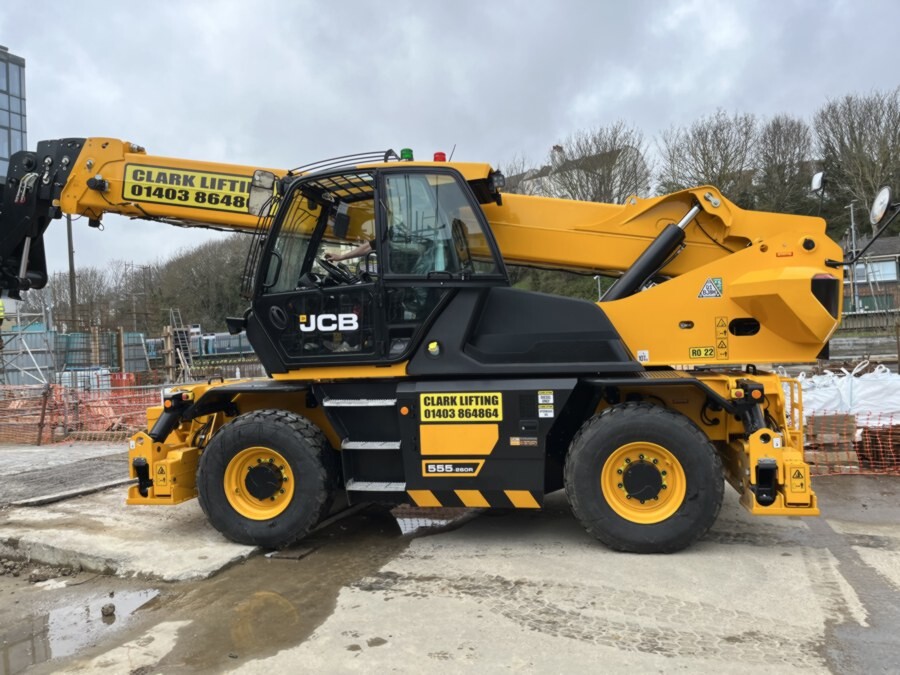 In industries where working at heights and handling heavy materials are daily routines, safety should be a top priority. Every year, accidents lead to injuries and fatalities, often due to a lack of proper precautions or awareness of risks. Whether you're using specialised equipment such as scissor lifts, boom lifts, telehandlers or spider cranes, understanding the hazards and how to mitigate them is essential.
In industries where working at heights and handling heavy materials are daily routines, safety should be a top priority. Every year, accidents lead to injuries and fatalities, often due to a lack of proper precautions or awareness of risks. Whether you're using specialised equipment such as scissor lifts, boom lifts, telehandlers or spider cranes, understanding the hazards and how to mitigate them is essential.
Why Safety at Height and Material Handling Is Important
The risks of working at heights are substantial. Falls from elevated positions remain one of the leading causes of workplace fatalities globally. Similarly, the improper use of material handling equipment can result in injuries from falling objects, equipment tipping over or operator error. Prioritising safety not only saves lives but also minimises downtime, enhances productivity and fosters a culture of responsibility.
Regulations
HSE Work at Height Regulations 2005
The Health and Safety Executive (HSE) introduced the Work at Height Regulations 2005 to ensure that all activities conducted at height are performed safely and responsibly. These regulations apply to employers, self-employed individuals and any person who controls the work of others at height, such as site managers or contractors.
Key provisions include:
- Risk Assessments: Employers must carry out comprehensive risk assessments to identify potential hazards and take action to eliminate or mitigate them.
- Planning and Supervision: All work at height must be properly planned, supervised and carried out by competent personnel.
- Minimising Risks: Measures should be taken to prevent falls, such as the installation of guardrails, safety nets or harness systems. Where falls cannot be entirely prevented, steps to reduce the consequences, like fall arrest systems, must be in place.
- Equipment Maintenance: Ladders, scaffolds and access platforms must be regularly inspected and maintained to ensure they remain safe and fit for purpose.
Material Handling and Lifting Equipment Regulations
In addition to working at height, proper handling of lifting equipment falls under the Lifting Operations and Lifting Equipment Regulations 1998 (LOLER) and Provision and Use of Work Equipment Regulations 1998 (PUWER). These require that:
- Equipment is Safe: All lifting equipment must be of good construction, appropriate for the task, and undergo regular inspections by competent personnel. For example, spreader beams, ideal for distributing the weight of heavy or awkward loads, ensure stability and safety. Shackles, meanwhile, are crucial for securing loads during lifting operations, providing reliable connections between lifting equipment and loads. This equipment is task-specific and must undergo thorough maintenance.
- Operator Training: Employees using lifting equipment must be adequately trained and aware of the risks associated with the equipment they operate.
- Load Security: Properly securing loads is critical to prevent accidents caused by shifting or falling materials. Using accessories such as pulleys and chain hoists, which are designed for efficient and secure handling, ensures that loads remain stable throughout the lifting process. Pulleys allow for smoother weight distribution, while chain hoists offer reliable lifting power for heavy materials.
- Risk Assessments: Like work at height, lifting operations must be risk-assessed and planned to avoid hazards.
Adhering to these regulations not only ensures compliance with legal standards but also significantly reduces workplace incidents.
Safety at Height
When working at heights risks such as falls, structural collapses and weather-related instability are constant concerns. To ensure safety:
- Conduct thorough risk assessments to identify hazards before starting work.
- Provide personal protective equipment (PPE), such as harnesses and helmets and ensure proper usage.
- Offer adequate training so workers are confident and knowledgeable about height-related safety practices.
- Consider environmental factors like wind and rain that could compromise stability or visibility.
Access Machines and Their Dangers
Specialised equipment used to access heights comes with unique risks. Understanding these hazards can prevent accidents.
Scissor Lifts
Scissor lifts are widely used for their stability and versatility. However, accidents can occur due to:
- Tipping Over: Operating on uneven or unstable ground can cause scissor lifts to tip, especially if the platform is extended.
- Overloading: Exceeding the weight capacity can strain the mechanism, increasing the likelihood of mechanical failure.
- Unsafe Movements: Moving the lift while raised poses significant stability risks.
- Falls from the Guardrail: Balancing on the platform’s guardrail is extremely hazardous, exposing the operator to the risk of a fall.
Boom Lifts / Cherry Pickers
Boom lifts provide extended reach and are ideal for accessing difficult areas, but they are not without dangers:
- Catapult Ejection: Sudden movements or jerks can cause workers to be ejected from the platform, especially without proper harness use.
- Overreaching: Extending the boom beyond its safe operating limits can destabilise the machine.
- Collision Risks: Working near obstacles or power lines requires precision and awareness to avoid accidents.
- Operator Crushing: Incidents of operators being crushed against structures whilst working at height are too frequent. These have led to the development of safety systems in the operator basket that detect any incidents and bring these machines to a stop.
Safety When Handling Equipment
Material handling equipment simplifies heavy lifting and moving tasks but comes with inherent risks. Proper training, maintenance and operational protocols are vital.
 Telehandlers / Roto Telehandlers
Telehandlers / Roto Telehandlers
Telehandlers are versatile machines capable of handling heavy loads, but they require caution:
Tipping Over: Operating on uneven terrain or with an extended boom can make the machine top-heavy and prone to tipping.
Load Mishandling: Incorrectly secured loads can shift or fall, endangering operators and nearby workers.
Visibility Issues: Blind spots around the equipment can lead to collisions or injuries.
Forklifts are essential in warehouses and construction sites, but they are involved in many workplace incidents:
- Overloading: Carrying more than the rated capacity can cause the forklift to tip forward.
- Speeding: Excessive speed can lead to loss of control, especially during turns.
- Pedestrian Hazards: Poor communication between operators and nearby workers can result in accidents.
Spider cranes are compact, making them ideal for confined spaces, but they have their risks:
- Stability Issues: Improperly deployed outriggers can lead to the crane toppling over. A thorough site survey, including evaluating the stability of ground should be carried out before any lift. Using crane mats, such as those available in rubber, metal or wood, is advisable to better distribute the crane’s weight and enhance stability on challenging surfaces.
- Overloading: Lifting beyond the crane’s capacity can strain the structure and cause collapse.
- Operator Error: Inadequate training or a lapse in judgement can lead to miscalculated lifts.
By addressing the specific risks associated with each machine and implementing robust safety measures, businesses can protect their workforce while maximising efficiency. The proper use of equipment such as material lifts, pallet trucks and ground protection matting from Clark Lifting Solutions ensures compliance with safety standards while delivering optimal performance. Safety isn’t just a regulatory requirement; it’s an investment in the wellbeing and success of every worker on site.
Contact Clark Lifting Solutions
For expert advice, certified lifting equipment and an extensive range of safety solutions, Clark Lifting Solutions is here to help. Based in Cowfold, we proudly serve West Sussex and beyond. Whether you need a customised solution or guidance on adhering to regulations, our team is ready to assist. Give us a call today on 01403 864864 or visit our website at clarkliftingsolutions.co.uk to explore our full range of services and products.
Stay updated on our latest offers and industry insights by following Clark Lifting Solutions on LinkedIn.
